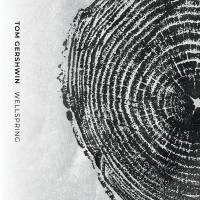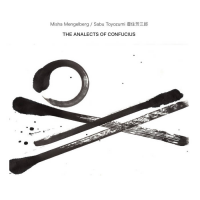Home » Jazz Articles » Album Review » Stan Kenton: The Innovations Orchestra
Stan Kenton: The Innovations Orchestra
In addition to Kenton, the roster of composers who contributed scores to the Innovations Orchestra reads like a Who's Who of American jazz at midcentury: Pete Rugolo, Johnny Richards (the composer of the Adventires in Time album), Bill Russo, Franklyn Marks, Neal Hefti, Shorty Rogers, Manny Albam, Bob Graettinger (who later composed the controversial "City of Glass") and Brazilian guitar virtuoso Laurindo Almeida. One of the fascinating things about the music of the Innovations Orchestra is that many of the compositions—like those of Duke Ellington's—were written with specific soloists in mind. In fact, a number of the charts have titles taken from the names of the musicians for whom they were originally written: "Art Pepper," "Maynard Ferguson," Shelly Manne," "June Christy" and "Coop's Solo" (for tenor man Bob Cooper).
Although two-CD compilation includes 30 compositions, a few of the charts deserve to be singled out for special attention. Bill Russo's "Solitaire" is a haunting melody that features the full-throated trombone of Milt Bernhart. In this piece one can hear the first inklings of a talent that would later go on to produce such innovative compositions for jazz orchestra like "Egdon Heath." Additionally, the Bob Graettinger compositions, "Incident in Jazz" and "House of Strings" display the protean skills of a composer who was at least fifty years ahead of his time and whose music is still being deciphered to this very day by scholars.
Some critics have complained that what Kenton attempted with the Innovations Orchestras wasn't really jazz, that it didn't swing, that it was too cerebral. Well, it's almost impossible to think of a musical ensemble including both Maynard Ferguson and Art Pepper not swinging. The Innovations Orchestra was quite capable of swinging and it did much of the time. But it was also capable of producing music of an extraordinarily high quality that makes one think in addition to making one's toes tap.
Track Listing
Mirage; Conflict; Solitaire; Soliloquy; Theme For Sunday; Amazonia; Lonesome Road; Trajectories; Incident In Jazz; Cuban Episode; Evening In Pakistan; Salute; Mardi Gras; In Veradero; Jolly Rogers; Blues In Riff; Cello-logy; Art Pepper; Halls Of Brass; Maynard Ferguson; Shelly Manne; June Christy; House Of Strings; Round Robin; Coop's Solo; Sambo; Ennui; Samana; Coop's Solo (alternate take); Salute
Personnel
Stan Kenton
pianoIncludes: Stan Kenton, Innovations Orchestra, Maynard Ferguson, Art Pepper, Bob Cooper, Laurindo Almeida.
Album information
Title: The Innovations Orchestra | Year Released: 2002 | Record Label: Capitol Records
Tags
PREVIOUS / NEXT
Support All About Jazz
 All About Jazz has been a pillar of jazz since 1995, championing it as an art form and, more importantly, supporting the musicians who make it. Our enduring commitment has made "AAJ" one of the most culturally important websites of its kind, read by hundreds of thousands of fans, musicians and industry figures every month.
All About Jazz has been a pillar of jazz since 1995, championing it as an art form and, more importantly, supporting the musicians who make it. Our enduring commitment has made "AAJ" one of the most culturally important websites of its kind, read by hundreds of thousands of fans, musicians and industry figures every month.

















